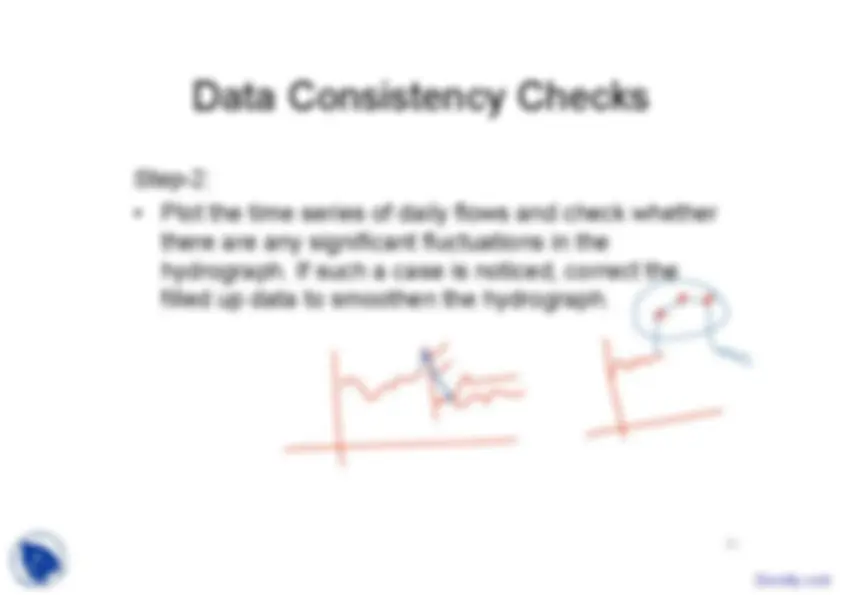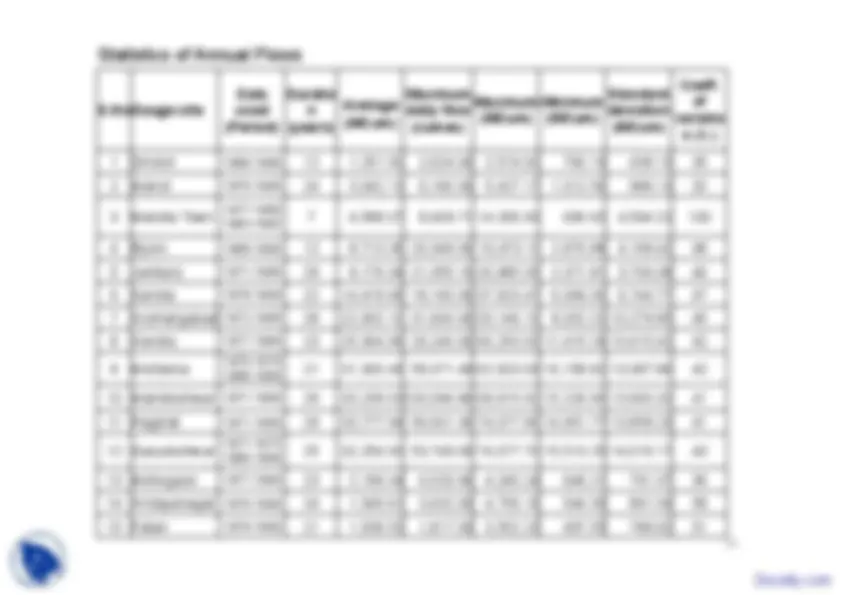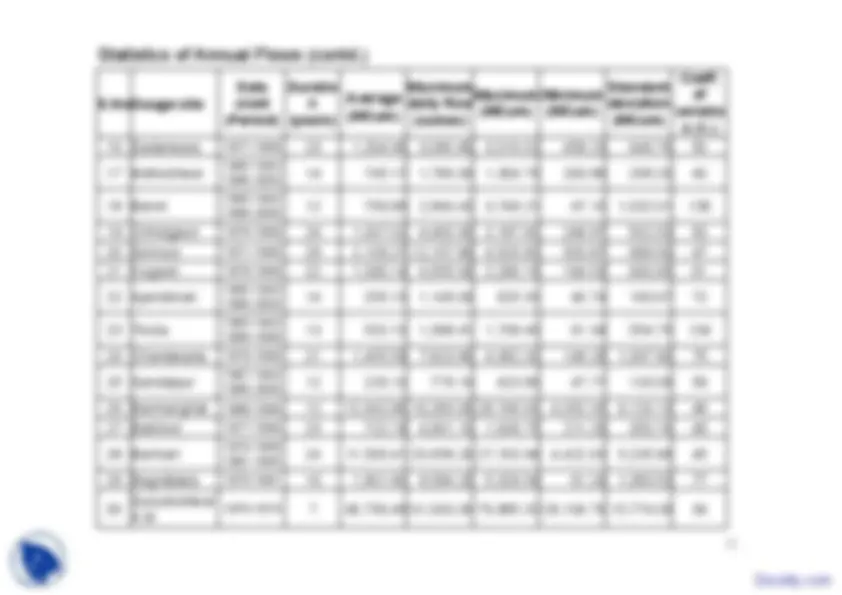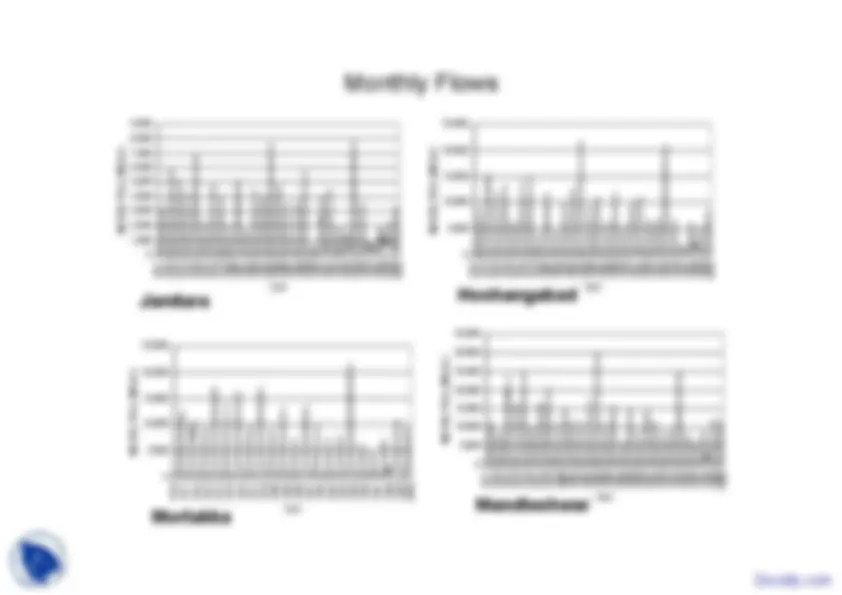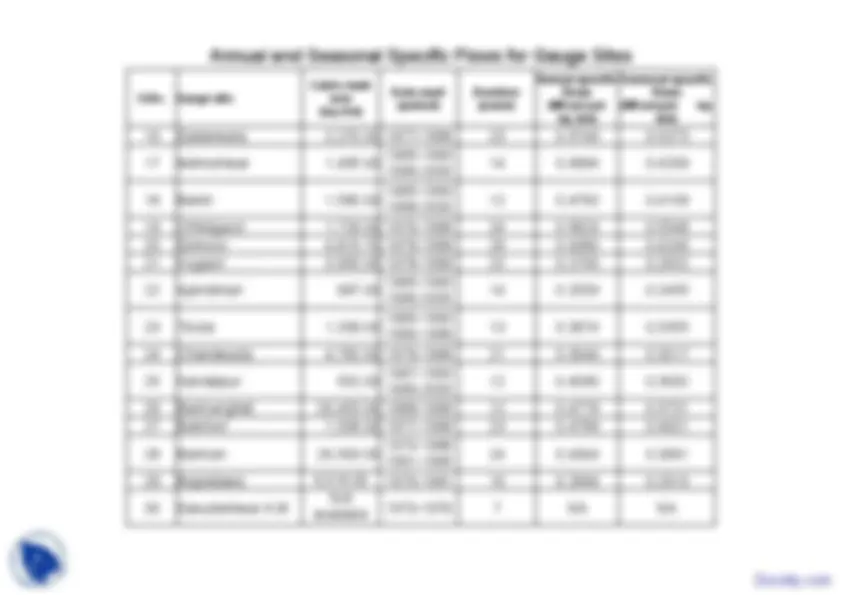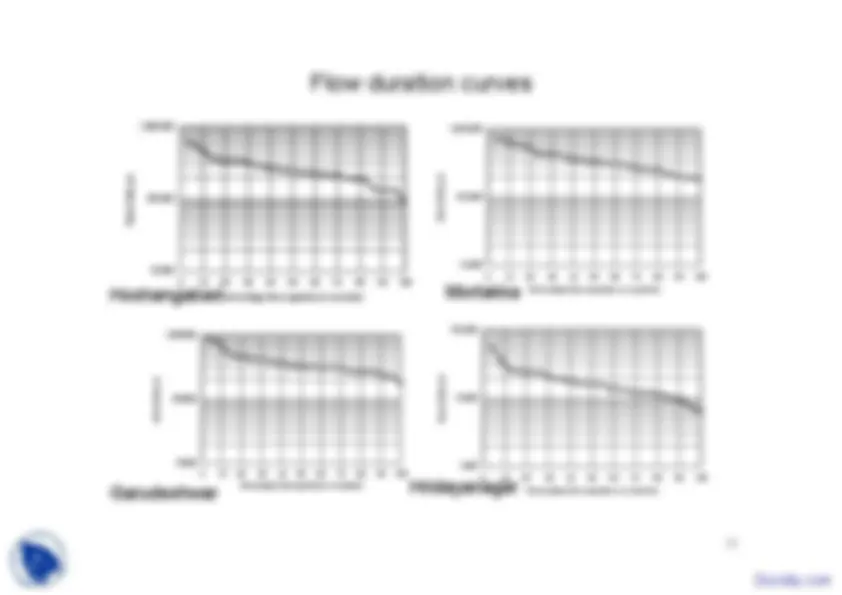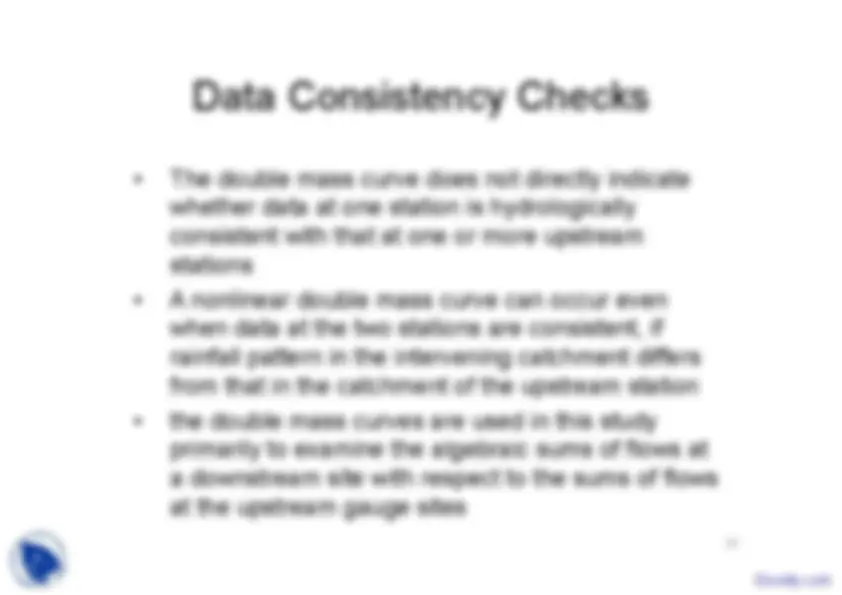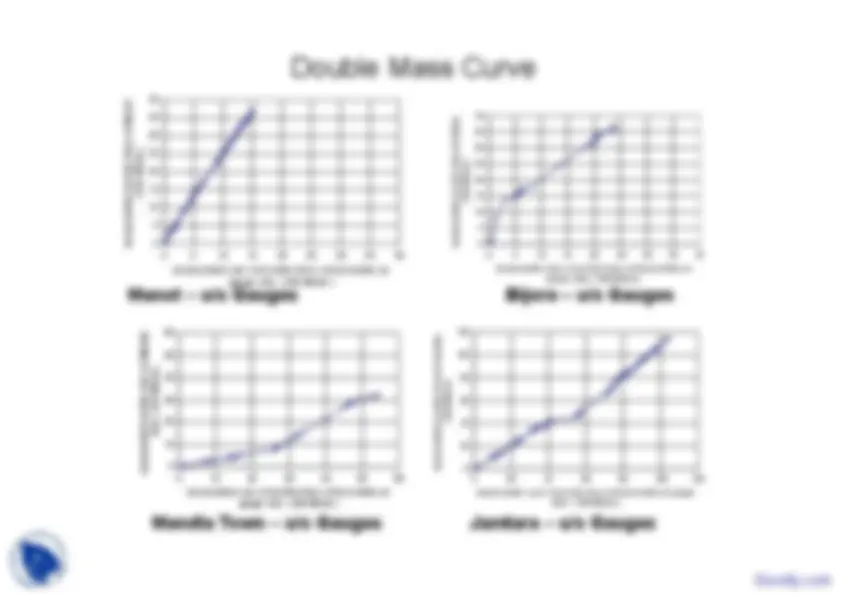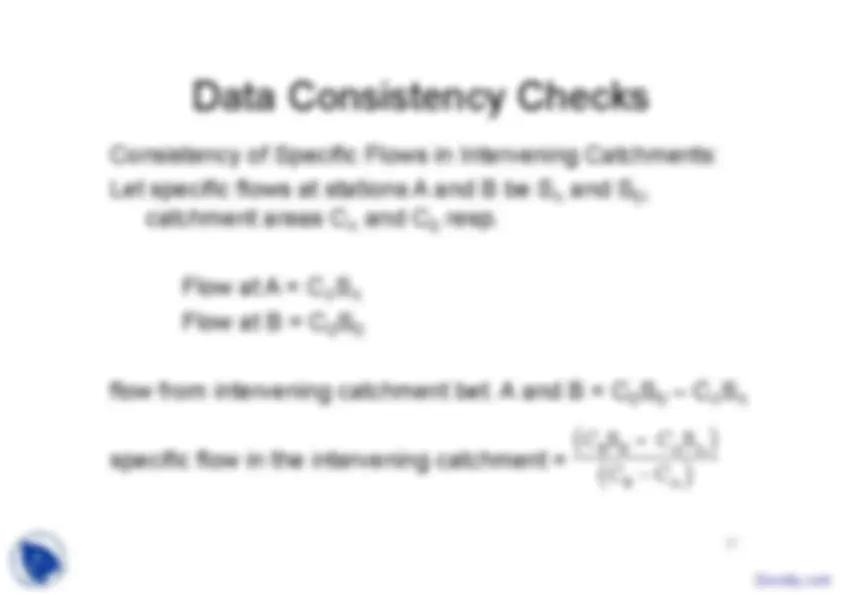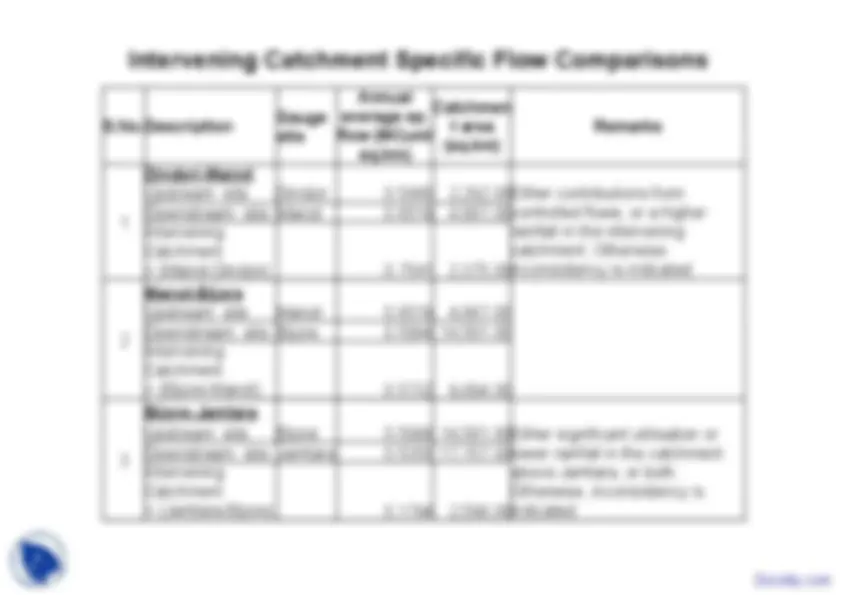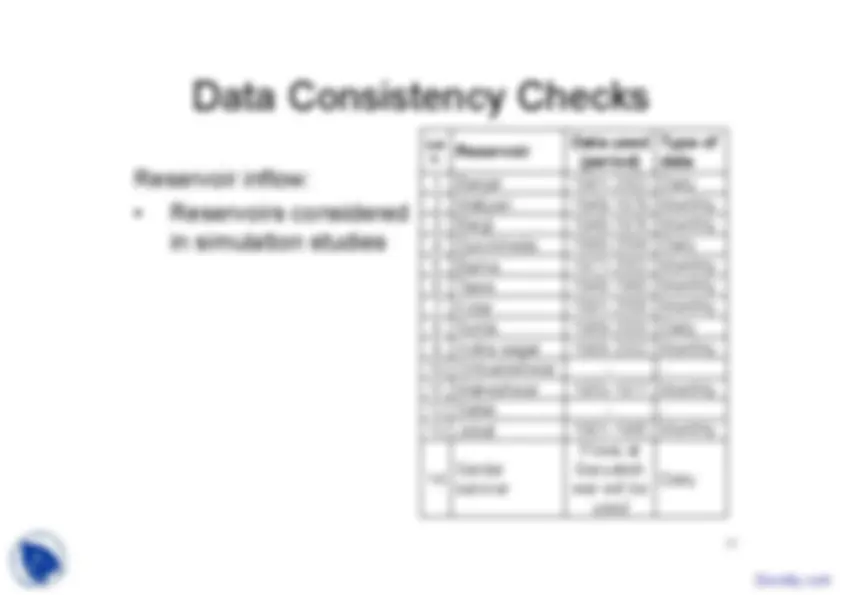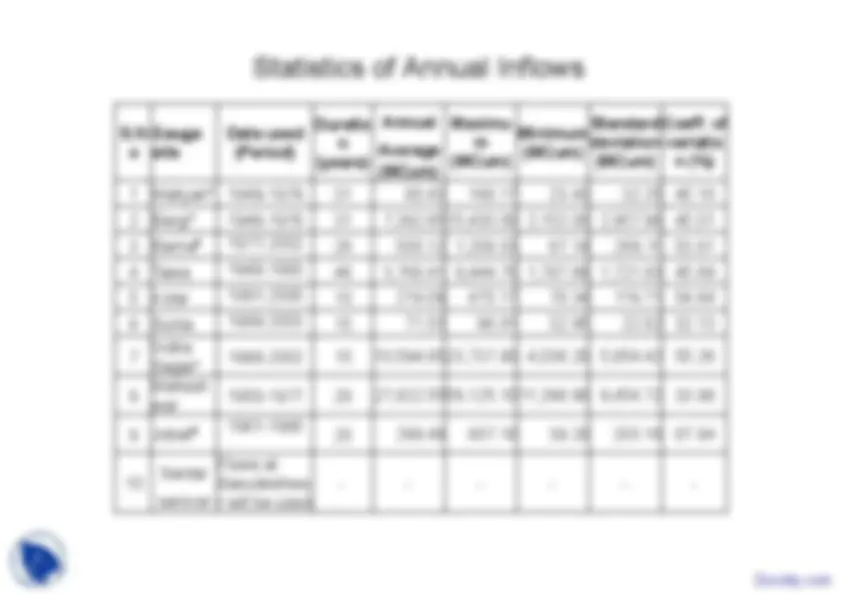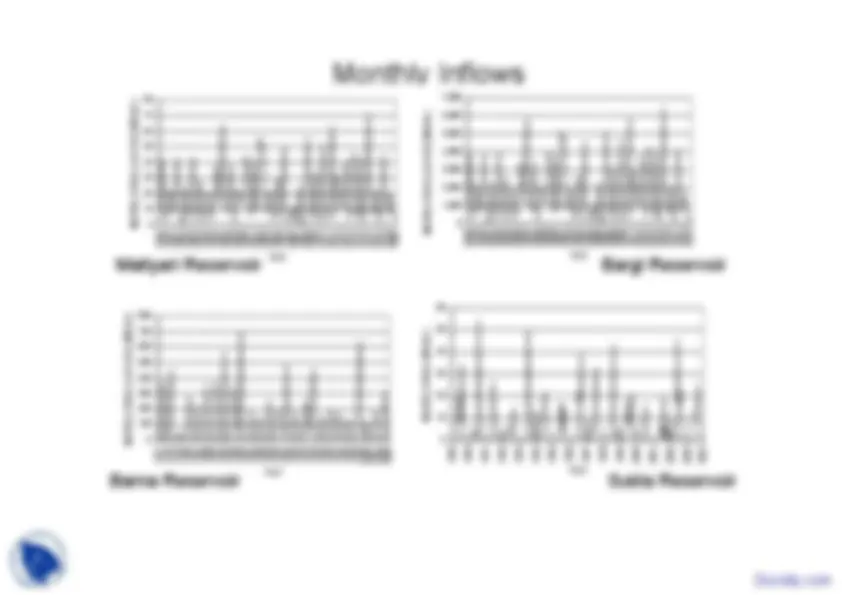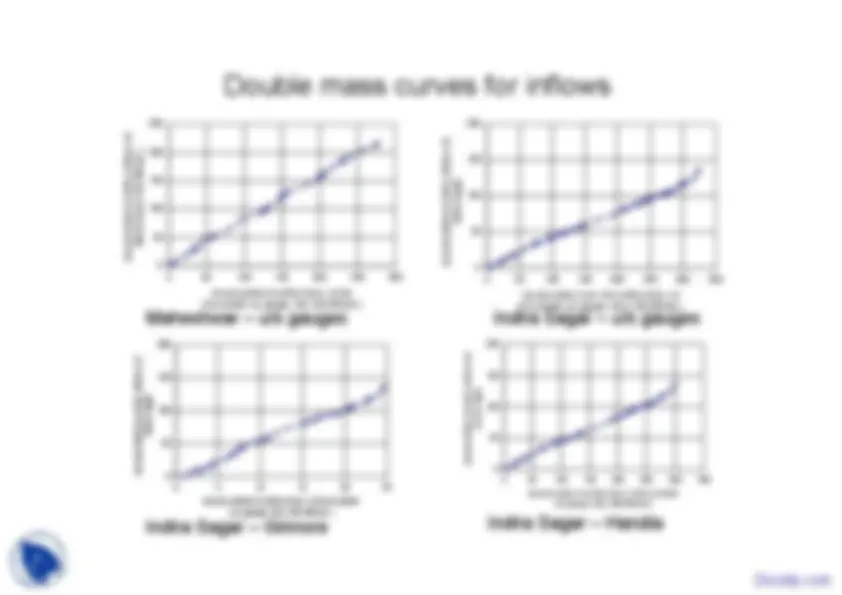Download Data Consistency Checks - Stochastic Hydrology - Lecture Notes and more Study notes Mathematical Statistics in PDF only on Docsity!
3
(a) Consistency of flow data at a gauge site with the
sum of flows from immediate upstream gauges,
(b) Consistency of flow data with respect to specific
flows,
(c) Consistency of flow data with the flow data at an
immediate neighboring (upstream) station, and
(d) Consistency of the reservoir inflow data where
available, with the data from the surrounding gauge
sites
4
Missing data for an example basin:
- The basin is predominantly monsoon driven.
- Flow patterns in the monsoon and non-monsoon
seasons are different.
- Different procedures adopted for filling-up the
discharge data for the two seasons
6
Data availability for the basin:
- Daily stream discharge data at 55 gauge sites
available.
- Gauge sites at which short length of data (of less
than 5 years) is available, are discarded from the
analyses.
- 30 gauge sites are selected based on the length of
data availability and location.
7
Line Diagram of the Basin
Showing the Location of
Stream Gauge Sites and
Reservoirs
9
Monsoon Period (Months: May-September):
Number of years for which data is available is greater
than or equal to 12
Step-1:
- Replace the missing data by average value for that
day, computed from years in which data is available
for the particular day.
Ex: Discharge data for June 20th^ in a year is
missing; Compute the average discharge of June
20 th^ from the data of other years for which the
discharge data is available for June 20th, and fill up
the missing data with this average value
10
Monsoon Period (Months: May-September):
Number of years for which data is in between 5 and 12
- If the missing data is non continuous (i.e., not more
than 3 days continuously in a month), plot the daily
flow time series for the month and join the curve
smoothly to obtain the missing values
12
If the missing data is continuous (i.e., more than 3
days continuously in a month)
- Compute the proportion of monthly flow occurring
in each day for which the data is missing.
For example, data for six days, June 20-25, 1998
is missing.
Data for all days in June is available for 7 years
13
- Use this average proportion on the average of the
month to fill the data for that day
In the example above, let the average of June flow
computed based on 7 years data = 12.6 cumecs
Average proportion for June 20th^ = 0.
Then, the data for June 20th^ 1998 is filled-up as 0.
* 12.6 = 0.252 cumecs
- Similarly fill-up the data for other days in that month.
15
Non-monsoon Period (Months: January-April and
October-December):
- Compute the probability that the flow is non-zero for
that day. (Clarke, 1973)
Ex: Day - Oct.20th; Number of years of data available
Number of non-zero flows on Oct. 20th^ in the 6 years
(leaving out the year in which the data is being filled) =
2 (i.e., only 2 out of these 6 years have a non-zero
flow. Remaining 4 years have a zero flow)
16
Clarke, R.T. (1973), Mathematical Models in Hydrology, FAO Irrigation and Drainage Paper no. 19, Rome, Italy.
- If the random number is less than the probability of
non-zero flow for that day then it is assumed that a
non-zero flow will occur for that day and the missing
data is replaced with the average value for that day;
Otherwise, the flow for that day is taken as zero
In the example above, the probability of non-zero flows
Random number = 0.
Since 0.248 < 0.333, non-zero flow occurs.
Number of years in which the flow is non-zero = 2
Average flow on Oct. 20th^ based on these two years of
flow = 2.87 cumecs
18
Statistical Analysis of Discharge Data:
- Statistical analysis of discharge data is performed
on the data from the selected 30 gauge sites.
- Analyses is conducted over a minimum of 12 years
data starting from 1970
- The Garudeshwar data considered is only for 7
years, from 1970-
19
21
S.No Gauge site (Period)^ used^ Data^ Duratio (years)^ n^ Average (MCum)^ Maximum^ daily flow (cumec)^ Maximum (MCum)^ Minimum (MCum)^ Standard^ deviation (MCum)
Coeff. of variatio n (%) 16 Gadarwara 1977-1999^23 1,304.96 3,080.80 3,016.02 459.23 646.76 50 17 Maheshwar 1985-1993 1996-2000 14 745.17 1,786.00 1,364.76 263.88 299.20 40 18 Bareli 1985-1993 1998-2000 12 756.89 2,964.42 3,749.21 47.10 1,032.01 136 1920 ChhidgaonGinnore 1976-19991971-1999^2429 1,007.022,109.27 (^) 12,157.804,460.00 2,187.604,525.83 249.97553.87 502.53989.50 (^5047) 21 Kogaon 1978-1999^22 1,090.14 4,555.00 2,296.16 164.53 660.65 61 22 Ajandiman 1985-1993 1996-2000 14 255.10 1,149.00 625.33 40.74 183.67 72 23 Tikola 1985-1993 1996-1999 13 532.10 1,398.41 1,738.49 61.34 554.75 104 24 Chandwada 1979-1999^21 1,455.58 7,823.80 4,082.33 149.28 1,097.90 75 25 Sandalpur 1987-1993 1996-2000 12 226.10 779.10 423.89 47.77 133.09 59 2627 BarmanghatBalkheri 1988-19991977-1999 1223 12,642.86722.18 16,283.004,961.10 28,749.001,639.75 4,052.33211.29 6,120.13350.74 (^4849) 28 Barman 1970-1988 1991-1995 24 11,593.41 20,658.20 27,743.94 4,422.63 5,235.99 45 29 Bagratawa 1976-1991^16 1,801.80 9,584.20 5,329.54 61.24 1,383.53 77 30 Gurudeshwar A.M 1970-1976^7 46,756.48 61,000.00 76,885.33 28,104.76 15,774.09 34
Statistics of Annual Flows (contd.)
Statistical Analysis of Discharge Data:
- The coefficient variation is more than 100% for the
gauge sites, Mandla town, Bareli and Tikola,
indicating a high variation of flows
- Similar statistics are computed for monthly flow data
- In non-monsoon months a large variation is
indicated
- As the flow magnitudes are small in the non-
monsoon months, the large variation is not of much
practical significance
22





